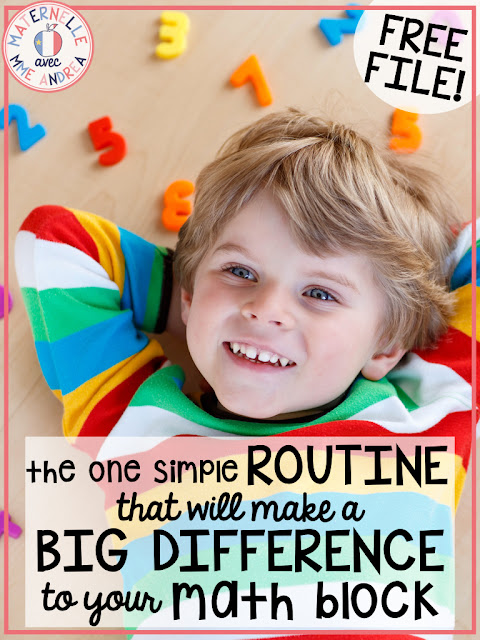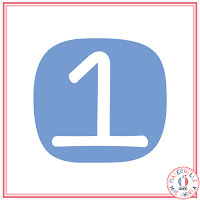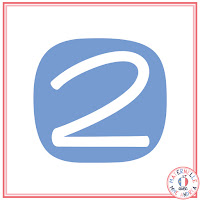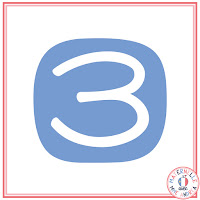Bonjour!
Well, la rentrée has passed, and we are getting settled into our new routines.
One thing that we started this past week is our math journal routine!
A few years ago, I would struggle with my students remembering what I had taught in previous math units. I would spend so much time creating fun, hands-on lessons, and my students would do really well and seem to have mastered whichever concept I was teaching at the time.
But then, time would pass, and a few months later, it was as if I had never taught them about that topic at all!
My students weren’t retaining everything I was teaching them, because they were no longer using the information.
Our brains are wired for this – they will drop information that it deems “unimportant”, in order to make room for new information.
Which can often be great and super helpful (there is really no need to remember what you ate for breakfast three weeks ago!). However, it’s not helpful at ALL when we want our students to remember things like how to correctly identify and continue patterns, or name 3D shapes!
I like solving problems, so I did a bit of research, and discovered something called “spiral review” -which is basically a fancy term for reviewing what you have previously taught over and over, all throughout the year.
Math journals are an AMAZING tool for spiral review! You can read all the reasons why I think they are so great in my previous post.
But today, I want to focus on something that was key for me – they are QUICK!
I needed to build spiral review into my existing math block in a way that was simple, efficient, and effective. And our math journal routine is the perfect way for me to do it!
Even this past week (our first week of math journals), we got all the way through our routine in 10 minutes or less each day. We haven’t really learned much yet, so we weren’t actually doing a lot of reviewing, BUT we were setting ourselves up for future spiral review success :)
I wanted to take a few minutes to share our math journal routine with you, step by step, in case you are looking for a quick and effective way to add some spiral review to your day.
Please note that the images in this post are from a previous year – we did not do Saint Patrick’s Day questions this week ;)
Basically, what we do during journal time is…
My students come into the classroom after eating at the cafeteria and immediately grab their journals and find the next blank page. I read the problem out loud a couple of times, and they start solving the problem with a picture right away.
I walk around cutting out the journal prompts and putting one on each child’s desk (yes, walking and cutting… you DO NOT NEED to cut them out ahead of time!!! Math journals are a ZERO PREP activity for me!)
Once my students finish their drawing and solve the problem, they glue the prompt into their journal and raise their hand. I come check it and give them a stamp/happy face if it’s right, or guide them onto the right path if not (or if they have inverted numbers!!! 8+1 does NOT = P!). They leave their journal at their desk and go look at a book until time is up.
Once everyone is done, we do a partner share. This only takes a couple of minutes, but I think it is important to get our students talking as much as possible… especially if French is their second language!
They compare drawings and talk about what is similar and different. Sometimes, they only talk about the colours they used and who is an “artist”… but sometimes, a child notices that another child used a more efficient way to solve the problem.
I think that’s when they really start to believe me that math strategies WORK, and it’s a good idea to have a bunch up your sleeve (they also get really good at picking out when their partners write their numbers the wrong way!).
We use math partners during math every single day (the same partners for about a week or so), so they are very quick about finding a quiet place with their partner, “rock, paper, scissoring” to see who shares first, and comparing their work. They LOVE to share, and learn very quickly that if they aren’t efficient, they lose their chance!
Another note – I print out the whole month’s worth of journal prompts at a time and keep them together at my desk with a paperclip.
I have 20 students this year, so one copy of each page works for me. I definitely recommend the cutting and walking strategy – works great! Our prep time is so precious!!
I love comparing entries and looking at how different students drew their answers to the same question! The different ways they think about the same problem makes the sharing time so valuable.
I love how it is so easy to see different strategies at work. Check out this subtraction question – one student drew eight windows in a row, and another drew two groups of four windows. The first student also used a counting strategy we had been practicing – “compte et coche” to count the remaining students!
Here is another example of student work from a previous year. If a student finishes quickly, I integrate some literacy and ask them to add a setting to their math story (with color).
Here is an example of two students answering the same question. Both are correct, but one student recognized that it was an addition problem and wrote in an equation. I always tell them to show me everything they know!
Here is a patterning question about Easter eggs. In kindergarten, students only need to be able to create patterns with 2-3 elements. However, I can use math journal time to check on who can extend and do more!
If this quick and effective math journal routine sounds like something you would like to try in your classroom, I have great news!
You can get a FREE SAMPLE of my prompts to try with your students!
Just enter your info in the form below, and I will send you 10 prompts for each of maternelle and première année, as well as some more information about spiral review and why it is so important.
Don’t forget – if you need more information about why math journals are such an amazing tool to use in the French primary classroom, check out this blog post with my top 5 reasons why you need to give them a go!
Have a great week!







